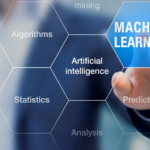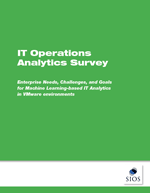This is the first post in a two-part series. Part 2 is available here. We are highlighting the shifting roles of IT as artificial intelligence (AI) driven data science evolves.
You may think that the words “artificial intelligence” or “machine learning” sound like trendy buzzwords. In reality, much of the hype about this technology is true. Unlike past periods of excitement over artificial intelligence, today’s interest is no longer an academic exercise. Now, IT has a real-world need for faster solutions to problems that are too complex for humans alone. With virtualization, IT teams gain access to a huge variety and volume of real-time machine data. They want to use to understand and solve the issues in their IT operations environments. What’s more, businesses are seeing the value in dedicating budget and resources to leverage artificial intelligence, specifically machine learning, and deep learning. They are using this powerful technology to analyze this data to increase efficiency and performance.
Data Science to the Rescue 
The complexity of managing virtual IT environments is stressing out traditional IT departments. However, IT pros are discovering that the solution lies in the data and in the artificial intelligence-based tools that can leverage it. Most are in the process of understanding how powerful data is in making decisions about configuring, optimizing, and troubleshooting virtual environments. Early stage virtualization environments were monitored and managed in the same way physical server environments were. That is, IT pros operated in discrete silos (network, storage, infrastructure, application). They used multiple threshold- based tools to monitor and manage them focusing on individual metrics – CPU utilization, memory utilization, network latency, etc. When a metric exceeds a preset threshold, these tools create alerts – often thousands of alerts for a single issue.
If you compare a computer science approach to a data science (AI) approach, several observations become clear. IT based the traditional approach on computer science principles that they have used for the last 20 years. This threshold-based approach originated in relatively static, low-volume physical server environments. IT staff analyze individual alerts to determine what caused the problem, how critical it is, and how to fix it. However, unlike physical server environments, components in virtual environments are highly interdependent and constantly changing. Given the enormous growth of virtualized systems, IT pros cannot make informed decisions by analyzing alerts from a single silo at a time.
Artificial Intelligence, Deep Learning, and Machine Learning
To get accurate answers to key questions in large virtualized environments, IT teams need an artificial intelligence -based analytics solution. They need a solution capable of simultaneously considering all of the data arising from across the IT infrastructure silos and applications. In virtual environments, components share IT resources and interact with one another in subtle ways. You need a solution that understands these interactions and the changing patterns of their behavior over time. It should understand how it changes through a business week and as seasonal changes occur over the course of a year. Most importantly, IT needs AI-driven solutions that do the work for IT. It should identify root causes of issues, recommend solutions, predict future problems, and forecast future capacity needs.
